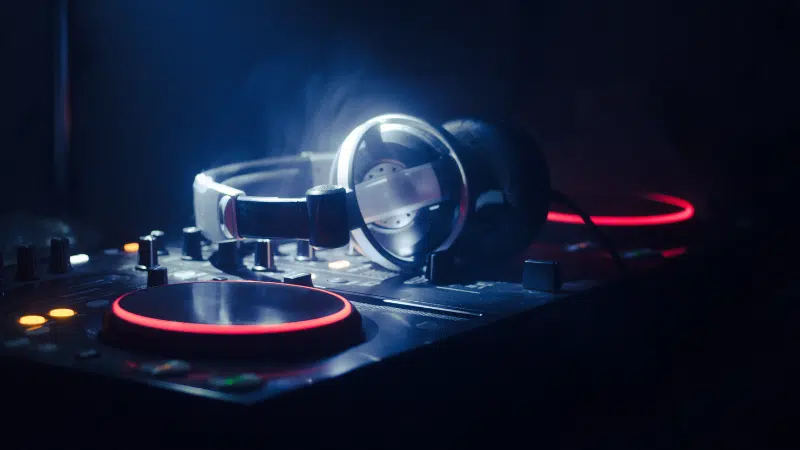The playlisting space is a highly competitive landscape. That’s why it’s so important to truly understand the ins and outs to give your music the best chance possible of getting placed. It’s not solely about luck and having a great song; it’s about understanding how different types of playlists work, what curators actually look for, and how to make your track stand out among a sea of hopefuls. In this post, we’ll give you everything you need to know to approach the process strategically and see real results. Let’s dive in…
How To Actually Get Playlist Placements as an Independent Artist
Understanding The Playlist Landscape
Your track isn’t going to fit every playlist. Before you even start pitching, you should know what kind of playlists to aim for. Each type serves a different purpose and has its own strategy behind it. There are 3 main ones to understand:
- Editorial playlists are curated by teams at major platforms like Spotify, Apple Music, and Amazon Music. These are highly competitive and typically favor artists with strong engagement, consistent releases, and a clear identity.
- Algorithmic playlists like Discover Weekly, Release Radar, and Daily Mix are generated automatically based on listener behavior.
- User-generated playlists are usually created by independent curators, influencers, or even fans, and they can be just as valuable as the big guys. These lists tend to be more niche and are a great way to find listeners who are genuinely into your sound.
Trust me when I say: DO NOT overlook the smaller playlists. Getting added to a handful of targeted, genre-specific lists can do more for your growth than landing one massive playlist that doesn’t even fit your vibe.
How Playlist Pitching Works
Remember, you’re pitching your music to curators, real people who get thousands of submissions every day from talented artists just like you who also have good songs to offer. Before you start submitting tracks willy-nilly, it helps to understand how the process actually works. Here’s what’s actually happening behind the scenes:
- Submission: You submit your track through a platform’s official tool (like Spotify for Artists) or through a trusted third-party service. You provide all the relevant info like the release date, genre, mood, instruments, and a short pitch about your song.
- Review: Next, the curators listen to the submissions, check for fit, and consider engagement metrics like pre-saves, previous streams, and social traction. They want music that aligns with the playlist’s vibe and audience.
- Decision Time: Curators then either add your track to the playlist, keep it in consideration, or pass.
- Distribution & Algorithmic Boost: Even if your track isn’t placed on an editorial playlist, algorithmic playlists like Release Radar or Discover Weekly can still pick it up if your track gets early engagement.
Think of pitching as giving curators context for your music. The more complete and accurate the submission, the easier it is for them to decide if it actually belongs on their playlist.
——
📚 Check out these extras…
Symphonic for New Artists: The Ultimate Guide to Getting Started
Post-Release Strategies to Maximize Your Track’s Momentum
Best Practices For Getting Featured on Spotify Playlists
How Proper Metadata Improves Your Music’s Chance Of Success
——
How To Actually Pitch Effectively
Now that you understand how the process works, let’s talk strategy. A strong pitch isn’t about just sending your track and hoping for the best. These curators put a lot of time and effort into these playlists, so you need to give them every reason to actually listen and really consider it. If you really want to improve your odds, here’s what you should do:
- Submit Early. ⏰ Pitch AT LEAST 7 days before your release. This gives the curators time to listen, consider, and potentially schedule your track for placement.
- Fill Our Your Metadata Accurately. 🤖 I’ve screamed from the rooftops many times before about the importance of proper metadata. Genres, moods, instruments, languages, and featured artists all matter. Correct metadata ensures your track gets matched with playlists that actually fit your music.
- Craft a Short, Personal Pitch. 📝 Keep it clear and engaging. Make sure you explain why the song exists/what inspired it, the vibe or story behind it, and why it fits the playlist you’re pitching to. (Please don’t just say “my song is fire”. lol) Curators want context, not hype.
- Build Traction Before Pitching! 🌱 Early engagement signals matter. Pre-saves, social buzz, and active fan interaction show that people care about your music, which can go a long way in the eyes of curators.
- Stay Consistent & Authentic! ✨ Regular releases, authentic engagement with your fans, and a clear identity will all help you big time. Curators want to see that you’re a serious artist putting real effort into this, not just a one-off submission.
Tools & Services That Can Help
Pitching your music can feel overwhelming already, and unfortunately, the playlist space is full of scammers promising guaranteed placements for money. These “pay-to-play” offers may sound tempting, but all they really do is hurt your streaming integrity, flag your tracks for artificial activity, and just straight up waste your time (and money, for that matter). Knowing how to spot scams and sticking with verified, transparent platforms is the key to pitching safely and seeing real results.
There are several legit services out there that can actually get your music heard and are genuinely worth trying. SubmitHub lets you send tracks directly to verified curators, bloggers, and playlist owners, and you can even track who listens and get feedback along the way. (Plus, we have a 10% off coupon with them.) Groover works similarly but guarantees a response from curators, usually within a week, giving you insight into how your music is received. Playlist Push is another great one that takes a campaign-driven approach: you set your track, budget, and targeting, and the platform matches your music with playlists while monitoring for authenticity, helping you avoid fake or inactive lists.
And if you’re a Symphonic client, you also have access to Playlist Pitching through the SymphonicMS. Here, you can submit your releases directly through your account, where our team reviews your music, evaluates audience data, and sends your track to curators who are the best fit. This service simplifies the pitching process while giving your music the best chance at real playlist placements.
Be Wary of Fraudulent Services 🚫
Streaming fraud is a serious problem in the music industry. In a world that’s obsessed with stats, it’s understandable why, but the issue runs deeper than just buying streams. Even if you decide to work with a service that claims to be legitimate, they may secretly be using the same illegal methods you’re trying to avoid.
Faking success, whether intentional or accidental, is extremely harmful to your career. It’s up to you to be conscious of scammers, bots, and misinformation, but we have resources to help you learn exactly what to look out for. // Check out “5 Types of Artificial Streaming Methods Every Musician Should Avoid” to learn more…
To wrap things up…
Playlist pitching is an ongoing part of promoting your music. As long as you stay informed about how these platforms and curators operate, prep your tracks with these tips, and always use legit services, you’re already way ahead of the pack. Taking the time to understand the process not only helps you avoid scams but also increases your chances of landing placements that reach real listeners and make a real difference.
Good luck!



